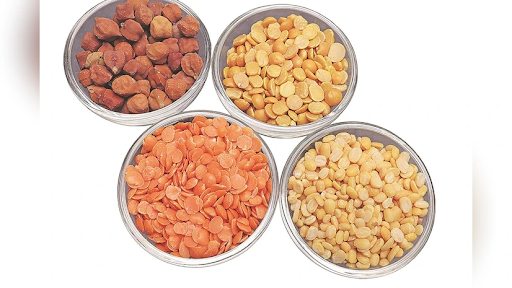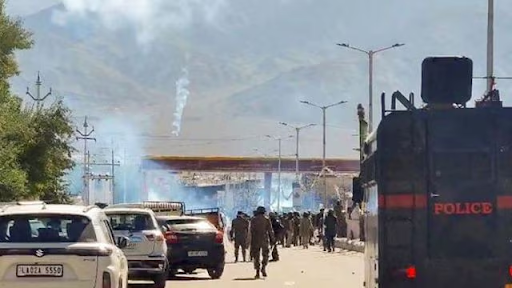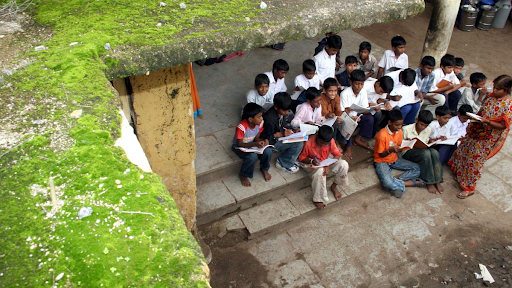Disclaimer: Copyright infringement not intended.
Context:
Production of some key minerals in the country has continued to witness strong growth during FY 2024-25, after reaching record production levels in FY 2023-24.
Details:
The fund will be utilised towards funding technological initiatives under the scheme namely, YES-TECH, WINDS, etc as well as Research and Development studies.
Yield Estimation System Using Technology (YES-TECH)
Use of Technology: Uses remote sensing technology with a minimum weight of 30% for yield estimation.
Implementation: Adopted by 9 major states: Andhra Pradesh, Assam, Haryana, Uttar Pradesh, Madhya Pradesh, Maharashtra, Odisha, Tamil Nadu, and Karnataka.
Objective: Phasing out Crop Cutting Experiments (CCE) and related issues.
Adoption:
- Madhya Pradesh has introduced 100% technology-based yield assessment.
- Claims calculation and settlement completed for 2023-24.
Weather Information and Network Data Systems (WINDS)
Goal: Increase weather data density using hyperlocal statistics.
Infrastructure plan:
- Automatic Weather Stations (AWS) at block level.
- Automatic Rain Gauges (ARG) at the panchayat level.
Network Expansion: This represents a fivefold increase in the current weather network density.
Funding: The cost of data rental is shared by the central and state governments.
Implementation status
- 9 ongoing states: Kerala, Uttar Pradesh, Himachal Pradesh, Puducherry, Assam, Odisha, Karnataka, Uttarakhand and Rajasthan.
- The Union Cabinet approved 2024–25 as the first year of implementation.
- Central fund sharing revised to a 90:10 ratio in favor of states.
North Eastern States Initiatives
- Priority focus: Efforts to feed all farmers in North Eastern states.
- Subsidy: The central government shares 90% of the premium subsidy with the North Eastern states.
- Flexibility: States with low gross acreage or voluntary participation in the system can redistribute unused funds to other development projects.
Pradhan Mantri Fasal Bima Yojana (PMFBY)
- The Ministry of Agriculture and Farmers Welfare Scheme PMFBY is an insurance service for farmers for their yields which was launched in 2016.
- The new Crop Insurance Scheme is in line with the One Nation One Scheme theme.
- The PMFBY replaced the previous two schemes: the National Agricultural Insurance Scheme (NAIS) and the modified NAIS.
Objectives:
- To provide insurance and financial support to farmers in case of failure of any of the notified crops due to natural calamities, pests and diseases.
- Stabilize farmers' incomes to ensure their continued farming.
- To encourage farmers to adopt innovative and modern agricultural practices.
- Ensure the flow of credit to the agricultural sector.
Key features of PMFBY
Premium rates
- Farmers will pay a flat premium of just 2% for all Kharif crops and 1.5% for all Rabi (winter sown) crops.
- For annual commercial and horticultural crops, the premium paid by farmers will be only 5%.
- The balance premium will be paid by the government (shared equally by the central and state governments).
- The aim is to provide farmers with a fully insured amount against crop loss due to natural disasters.
Area approach
- The program will be implemented on the basis of a "surface approach", i.e. demarcated areas for each notified crop for large-scale calamities,
- The unit of insurance is the village/village Panchayat level for major crops and for other crops it may be a size unit above the village/village Panchayat level.
- It is assumed that all insured farmers in the insurance unit to be defined as the "notified area" for the crop face similar risks.
No upper subsidy limit
- The upper limit of the state subsidy is not set. This means that even if the residual premium is 90%, it will be covered by the government.
Use of technology
- Crop Insurance App: Enables easy registration of farmers. Facilitates crop loss reporting within 72 hours of any event occurring.
- Latest technological tools: Satellite imagery, remote sensing technology, drones, artificial intelligence and machine learning are used to assess crop losses.
- PMFBY Portal: To integrate land records.
Exemption from tax liability: All services involved in the implementation of the scheme will be exempted from service tax.
Beneficiaries to be covered
- All farmers growing notified crops in the notified area during the season who have an insurable interest in the crop are eligible.
- To respond to farmers' demand, the scheme has been made voluntary for all farmers since Kharif 2020.
- Earlier, registration was mandatory for farmers holding Crop Loan account or Kisan Credit Card (KCC) account etc.).
Risks covered by the scheme:
- Comprehensive risk insurance is provided to cover loss of income due to perils that cannot be prevented such as natural fire and lightning, storm, hail, cyclone, typhoon, storm, hurricane, tornado.
-
- Risks from floods, inundations and landslides, drought, drought, pests and diseases will also be covered.
- In cases where the majority of insured farmers in the notified area intend to sow or plant and have incurred expenses for this purpose, but are prevented from sowing or planting the insured crop due to adverse weather conditions, claims for compensation up to 25% of the sum insured.
- For post-harvest losses, coverage will be available for a maximum period of 14 days from harvest for those crops that are kept in a "cut & spread" condition to dry in the field.
- Loss and damage arising from the occurrence of identified localized hazards such as hail, landslide and flood affecting isolated farms in the notified area would also be covered.
Restructured Weather-Based Crop Insurance Scheme (RWBCIS)
The goal of the scheme
"The Restructured Weather Based Crop Insurance Scheme (RWBCIS) aims to alleviate the hardships of insured farmers against rain, temperature, wind, humidity, etc."
The Restructured Weather Based Crop Insurance Scheme (RWBCIS) aims to alleviate the hardship of insured farmers against the likelihood of financial loss due to expected crop loss due to adverse weather conditions related to rain, temperature, wind, humidity, etc.
RWBCIS uses weather parameters as a "proxy" for crop yields in compensating growers for predicted crop losses. Payout structures are developed in the range of losses that have been deemed to have been incurred using weather triggers.
Crop coverage
- Food crops (cereals, millets and pulses)
- Oil seeds
- Commercial / horticultural crops
Weather hazards to cover
The following major weather perils which are considered to be the cause of 'severe weather' leading to crop loss will be covered under the scheme:
- Rainfall – Deficit rainfall, Excess rainfall, Unseasonal rainfall, Rainy days, Drought
- Temperature – High temperature (heat), Low temperature
- Relative humidity
- Wind speed
- Combination of the above
- Hail and cloudburst may also be included as supplementary/Index-Plus products for farmers who have already taken normal coverage under RWBCIS.
Source:
PIB
|
PRACTICE QUESTION
Q.Which of the following weather parameters are covered under the Restructured Weather-Based Crop Insurance Scheme (RWBCIS)?
- Deficit rainfall
- High temperature (heat)
- Wind speed
- Cloudburst
- Hail
Select the correct answer from the options given below:
(a) 1, 2, 3, 4, 5
(b) 1, 2, 3, 4
(c) 1, 2, 3
(d) 2, 3, 5
Answer: a
Explanation:
The Restructured Weather-Based Crop Insurance Scheme (RWBCIS) covers various weather parameters that can lead to crop loss including:
Deficit rainfall
Excess rainfall
Unseasonal rainfall
High temperature (heat)
Low temperature
Wind speed
Relative humidity
Hail and cloudburst (as supplementary/Index-Plus products for farmers who have taken normal coverage)
These weather triggers are used to estimate crop losses and determine payouts for farmers. Therefore, all the listed weather parameters are covered under the scheme.
|










